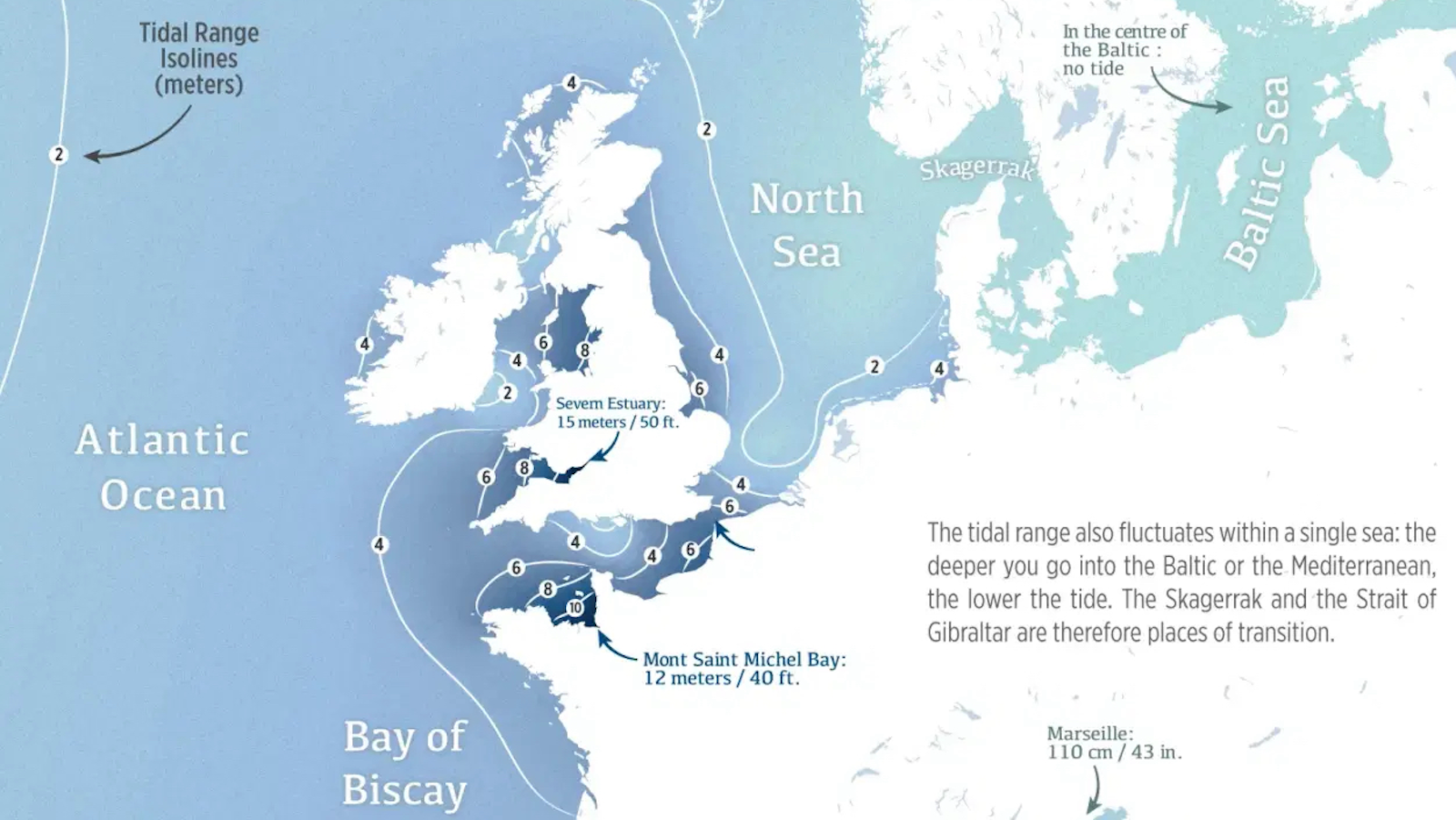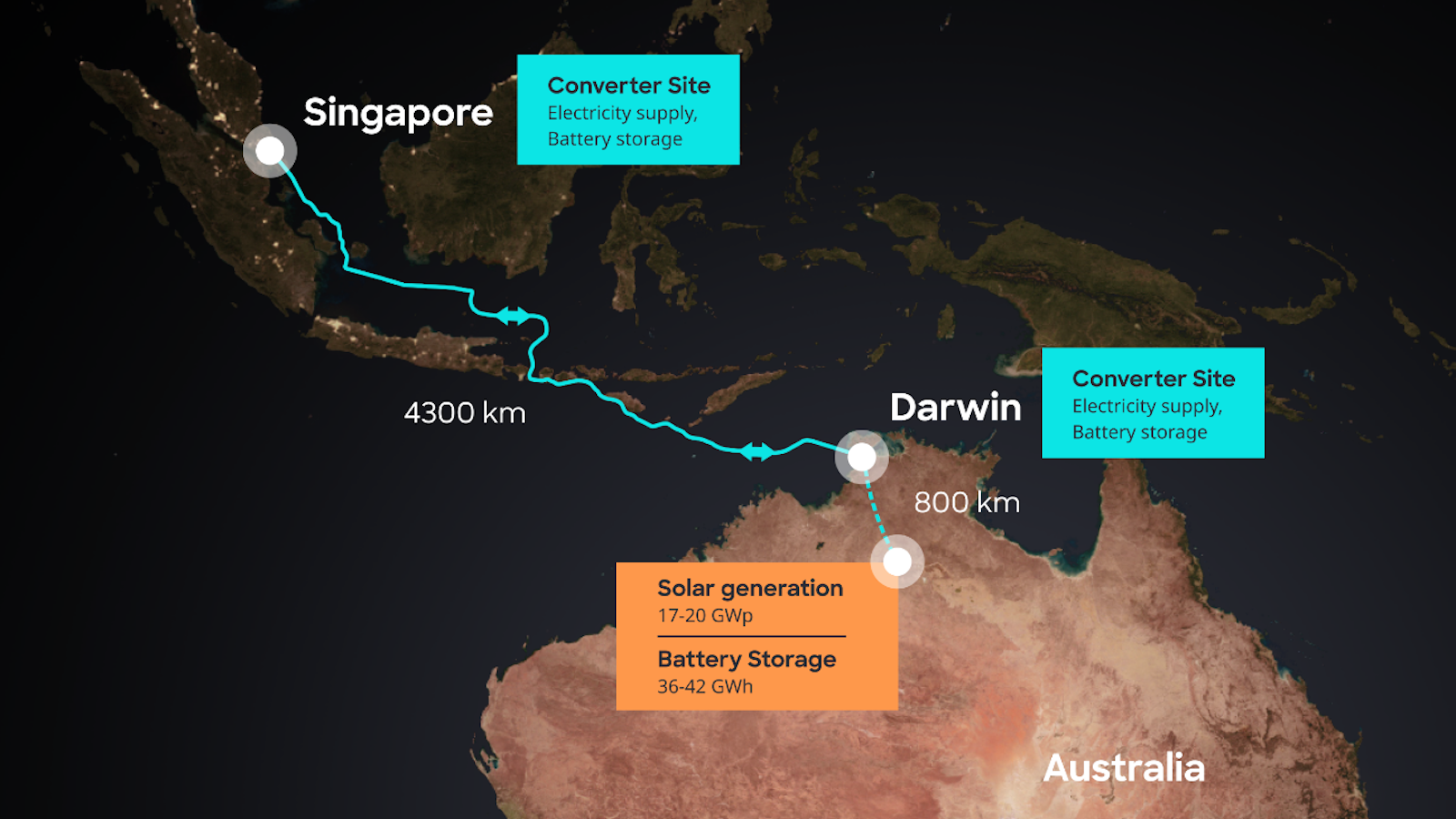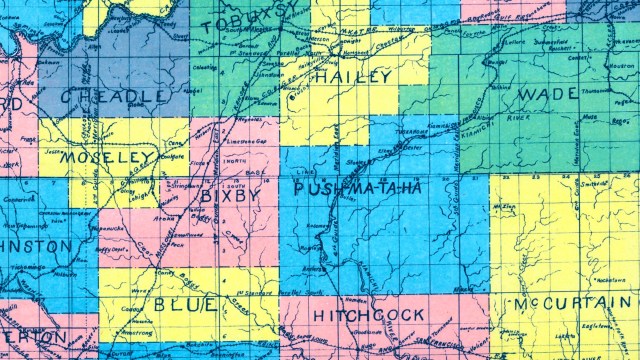148 – Oh, Inverted World
As we’ve all learned in school, 70% of the Earth’s surface is covered by water, only 30% is solid ground. What if everything was reversed? What if every land mass was a body of water, and vice versa?
This map explores that question, and it is fantastic in at least three definitions of that word: fanciful, implausible and marvelous. The interior of China is marked by a spouting whale, a sailboat ploughs the waves of the Brazilian Ocean, a school of fish traverse the watery wastes of Siberia, large cities dominate places rarely frequented by people in this universe…
The oceans in this inverted world are the Great Asian Ocean (the world’s largest), the African, Brazilian, United and Antarctica Oceans. These are punctuated by islands that in our world are lakes: • Baikal Island: surely a mountainous place, as in our world it is the deepest, most voluminous fresh water lake on the planet, containing 20% of the world’s liquid fresh surface water. • To the west of this vast ocean, close to the Mediterranean land mass, lies the unnamed Caspian Island – to the east thereof is the tiny (and if the reversal is symmetrical, rapidly sinking… or should that be emerging? Can’t work that one out) Aral Island. • A similar island, unnamed in the map, perforates Africa; this must be Lake Victoria, or rather Victoria Island. • Other similar land masses are the Great Islands, substituting for the Great Lakes… In this map, perhaps intentionally, they look like a dolphin doing a show jump.
The seas are merely dotted with boats and fish, but 70% of the planet’s surface is now walkable, arable, livable, mappable:
• The Gulfstream Mountains form the backbone of the North Atlantic States (I’m not sure whether the Eiffel Tower close to the African shore is part of them). • The South Atlantic Kingdom is marked by Giraffes galloping near the Brazilian shore, a cactus and a burning sun. An important population centre is St. Helena City, close to our world’s British island dependency of Saint Helena. • The narrows between the Brazilian and Antarctica Oceans is dominated by Drake City. • At the western shores of the Brazilian Ocean lies the South Pacific Kingdom. • To the north, on the Eastern shore, is Mexico Land (in our Gulf of Mexico). • Bermuda City seems to form a separate entity from the North Atlantic States. • Labrador City lies between the United Ocean and the Greenland Sea (shouldn’t that be frozen?) • Celtic Land lies just to the south of English Lake. • Surely, the Mediterranean Kingdom is a pivotal player, located between the western outlet of the Great Asian Ocean and the African Ocean – with a land bridge extending towards the Indian Kingdom. • Flocks of sheep and windmills dominate the vast expanses of land towards the Australian Sea. • The Philippine Kingdom rules the Far East, punctuated by the Japan, Taiwan and (erh) Philippine Lakes. • On the far northern shores of the Great Asian Ocean, finally, lie Arctic Land and the East Siberian Kingdom.
This map, sent to me by Phil Rodgers, was made by Vlad Gerasimov, a graphics enthusiast and digital artist who designs and provides wallpapers and other stuff. Look for his website at vladstudio.com.






